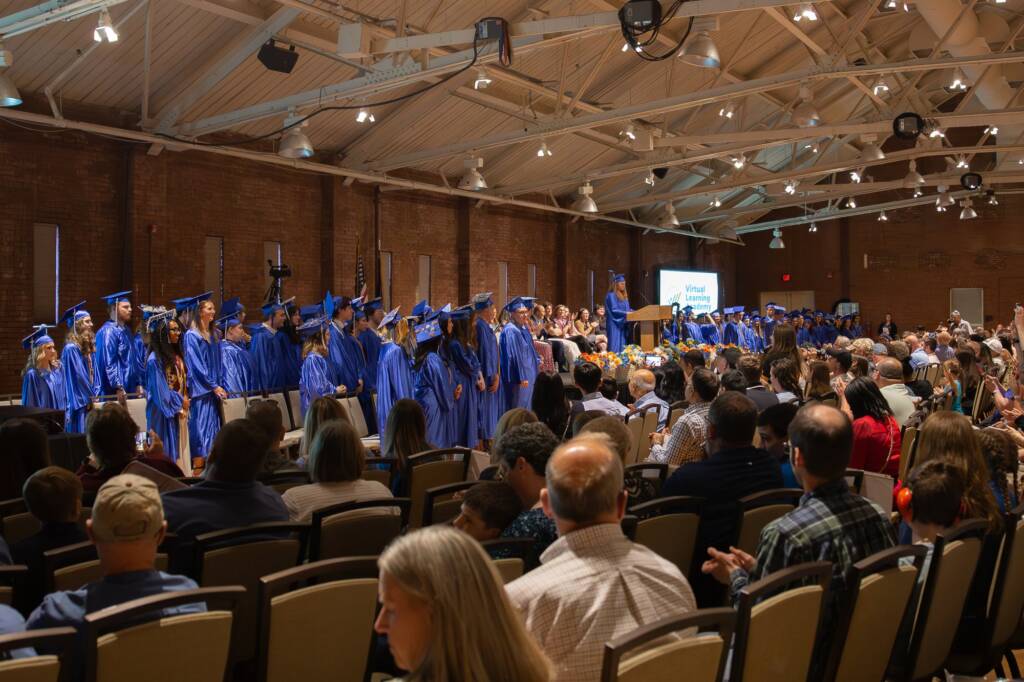Meet Lisa.
Like every student, Lisa is unique. Her needs, interests, and talents are distinctively hers.
In school, Lisa is excited about her Economics class and wants to learn at an accelerated pace. She doesn’t, not because she’s unable, but because she has to follow the school’s schedule. She follows the school’s timeline and completes the course by the end of the semester, unchallenged, a bit bored, and maybe even feeling defeated.
Now consider Lisa in her English course. She wants to be successful, but she needs additional time to master all of the competencies in the course. If she doesn’t master them by the end of the semester, she’ll fail the course and have to retake it.
What does Lisa need to succeed?
Customized Learning
A customized learning plan. It’s not just personalized-it’s customized.
What’s the difference?
Think about going to the store to buy a new shirt. You can choose any shirt you want. You can get it monogrammed if you’d like, and you can select the color. That’s personalized.
Now think about the shirt’s fit. You bought your size and color, and even have your initials on the collar. But the shirt doesn’t fit quite right. You take it to a tailor to make it suit you.
What does it take to customize the shirt? You and the tailor select a fabric that’s comfortable. You discuss the color and the design of the shirt itself. The tailor works with you to customize the collar to suit your preferences-maybe you don’t even have one. You select the buttons, or maybe you opt for clasps or zippers. The tailor works with you to help you create a new shirt that you love. That’s customized.
Flexible Learning Pathways
Lisa needs a customized plan, one that she can tailor to fit her needs so that she can get help in problem areas and excel in areas of interest and ability.
How can she customize her learning? Through flexible learning options.
The flexible learning options at VLACS offer stand-alone options or a combination of learning opportunities-Courses, Experiences, Projects, College Credits. These opportunities allow Lisa to demonstrate mastery of competencies. The result? Credit for a class, a high school diploma, or credit towards college.
These different options don’t function in silos. Lisa doesn’t have to pick just one. For a credit, she needs the right combination of competencies, but she can tailor how she earns each one. In Economics, she may opt to earn a few competencies in a course, complete a project that shows mastery of additional competencies, and intern with an economist for the rest.
As she works through her competencies, she has the help of dedicated instructors who teach and guide her through the process. She submits work regularly and checks in with her instructors weekly.
The same goes for English, where she needs more help. She can mix and match options to achieve competencies for credit in a way that makes sense for her-and without the constraints of a traditional school model.
Flexible learning options are the cornerstone of the customized learning model.
What do these options look like? Let’s take a closer look:
1. Courses
Of the four pathways, online courses are among the most common. For students who learn best through independent coursework, this learning journey may make the most sense. Courses consist of groups of competencies, usually broken down into learning modules, with lessons and corresponding assessments.
Some students may want to earn credit through just a course. Others want a variety. Flexible learning allows students to make the choice.
For students like Lisa, courses give her the opportunity to master a few competencies that she can complete independently, with the option to earn additional competencies through other options.
Lisa can take all the Economics and English courses she wants, or earn some competencies through a course, and the rest through any combination of pathways. In areas that are more difficult, Lisa may find the Projects or Experiences more hands-on, accessible, and desirable for her learning needs.
2. Projects
In-depth research and real-world applications with a career focus. It doesn’t get much better.
Projects are pre-designed to immerse students in a scenario where they have to solve real-world problems associated with a specific career. Ideally, students work on a project in an area that interests them.
Lisa struggles in her English class because she fails every essay. She doesn’t enjoy writing essays on topics that don’t interest her. She can’t focus, she’s not invested, and she turns in poor work with a lot of mistakes.
She needs the opportunity to write about something she cares about in a format that makes sense to her and that allows her to show that she understands the competency required for credit.
Lisa loves sports.
An English Project where she takes on the role of a Sports Journalist who creates content for a television sports program allows her to invest in something that interests her and demonstrates her mastery of the Writing Arguments competency.
Projects give Lisa the agency and flexibility to find a project in an area of career interest, demonstrate competency, and get help where she needs it.
3. Experiences
The beauty of Experiences? Students work with teachers to design their Experiences, learn the required competencies, and assess their work for mastery. They can work towards mastery on their own timeline, not in a predetermined one.
When Lisa sees the competencies required for her Economics credit, she thinks she may want to shadow an economist at a local marketing firm. Not only will she learn about the role of economists in marketing, but she’ll also work with an Economics teacher to partner with that local firm, set up a job shadow, and design assessments that show her understanding of the job-and her mastery of the competencies.
Not only will she complete assessments, but she’ll also meet with her teacher regularly to discuss what she’s learning in her experience.
4. College
Taking college courses as early as high school or even middle school is another pathway students can use to demonstrate mastery of competencies and earn credits toward a degree or a credential.
À-la-carte coursework, first-year college coursework, and associate’s degree programs in accredited online and hybrid models give students the opportunity to master competencies in ways that have meaning for them.
While Lisa may not want to take a college-level English course, she could opt to earn additional credits in Economics by taking a college course.
Watch this video to learn more about how the college journey works.
Flexible learning options allow students to tailor their learning needs while earning the competencies and credits towards high school graduation, a professional credential, or even an associate’s degree.
The beauty? It’s on their terms.
Not only can students personalize their learning by choosing their journeys, but they can also customize their learning by selecting how to earn each competency. Layer this on top of an anytime, anywhere learning model, and students are ready for success.
Learn more about flexible learning in a customized model at an open house and make a choice that fits your learning needs.



